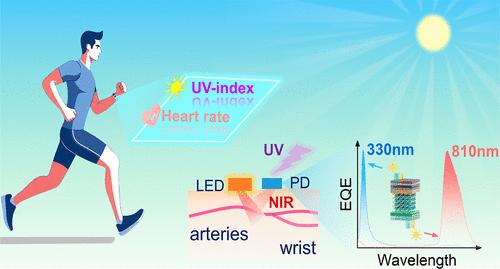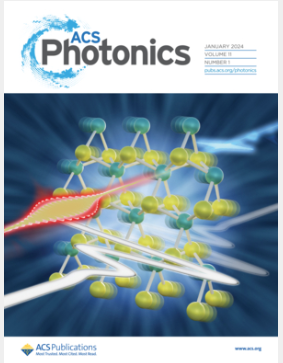UV and NIR Dual-Band Photodetector Enabled by p-Type Perovskite and Semitransparent Microcavity
IF 6.7
1区 物理与天体物理
Q1 MATERIALS SCIENCE, MULTIDISCIPLINARY
引用次数: 0
Abstract
Narrowband photodetectors (NPDs) are essential for surveillance, photometry, and remote sensing. However, few studies have demonstrated multiple narrowband detection abilities within a single PD, particularly in the ultraviolet (UV) and near-infrared (NIR) regions, which are not directly recognized by the human eyes. In this work, we present a method for UV and NIR dual-band photodetection on the same device through integrating tandem-like perovskite/organic bulk-heterojunction (P-OBHJ) with a translucent microcavity. By leveraging the self-doping effect of perovskites, we fabricated p-type MAPbI3 films with the unbalanced electron–hole transport, enabling complete visible-light depletion upon bottom illumination. Meanwhile, NIR light passes through the entire perovskite layer to reach the OBHJ layers, ultimately resulting in a narrowband response to NIR light. Upon top illumination, the semitransparent microcavity selectively transmits only UV light, achieving narrowband UV detection. As a result, the optimized device exhibits the responsivity of 0.21 and 0.03 A/W with the corresponding shot-noise-limited specific detectivity reaching 4 × 1012 and 6 × 1011 Jones, at the peak wavelengths of 810 and 330 nm, respectively. Last, we showcase prototype applications of the dual-band PDs as heartbeat and solar UV intensity monitors, providing a novel strategy for the development of multifunctional NPD.

由p型钙钛矿和半透明微腔实现的紫外和近红外双波段光电探测器
窄带光电探测器(npd)是必不可少的监视,测光和遥感。然而,很少有研究证明在单个PD内具有多个窄带检测能力,特别是在人眼无法直接识别的紫外(UV)和近红外(NIR)区域。在这项工作中,我们提出了一种通过将串联状钙钛矿/有机体异质结(P-OBHJ)与半透明微腔集成在同一器件上进行紫外和近红外双频光探测的方法。利用钙钛矿的自掺杂效应,我们制备了具有不平衡电子-空穴输运的p型MAPbI3薄膜,在底部照明时实现了完全的可见光耗尽。同时,近红外光穿过整个钙钛矿层到达OBHJ层,最终导致对近红外光的窄带响应。在顶部照明时,半透明微腔选择性地只传输紫外光,实现窄带紫外检测。结果表明,优化后的器件在峰值波长810 nm和330 nm处的响应度分别为0.21和0.03 a /W,相应的短噪声限制比探测率分别达到4 × 1012和6 × 1011 Jones。最后,我们展示了双波段NPD在心跳和太阳紫外线强度监测方面的原型应用,为多功能NPD的发展提供了一种新的策略。
本文章由计算机程序翻译,如有差异,请以英文原文为准。
求助全文
约1分钟内获得全文
求助全文
来源期刊

ACS Photonics
NANOSCIENCE & NANOTECHNOLOGY-MATERIALS SCIENCE, MULTIDISCIPLINARY
CiteScore
11.90
自引率
5.70%
发文量
438
审稿时长
2.3 months
期刊介绍:
Published as soon as accepted and summarized in monthly issues, ACS Photonics will publish Research Articles, Letters, Perspectives, and Reviews, to encompass the full scope of published research in this field.
 求助内容:
求助内容: 应助结果提醒方式:
应助结果提醒方式:


